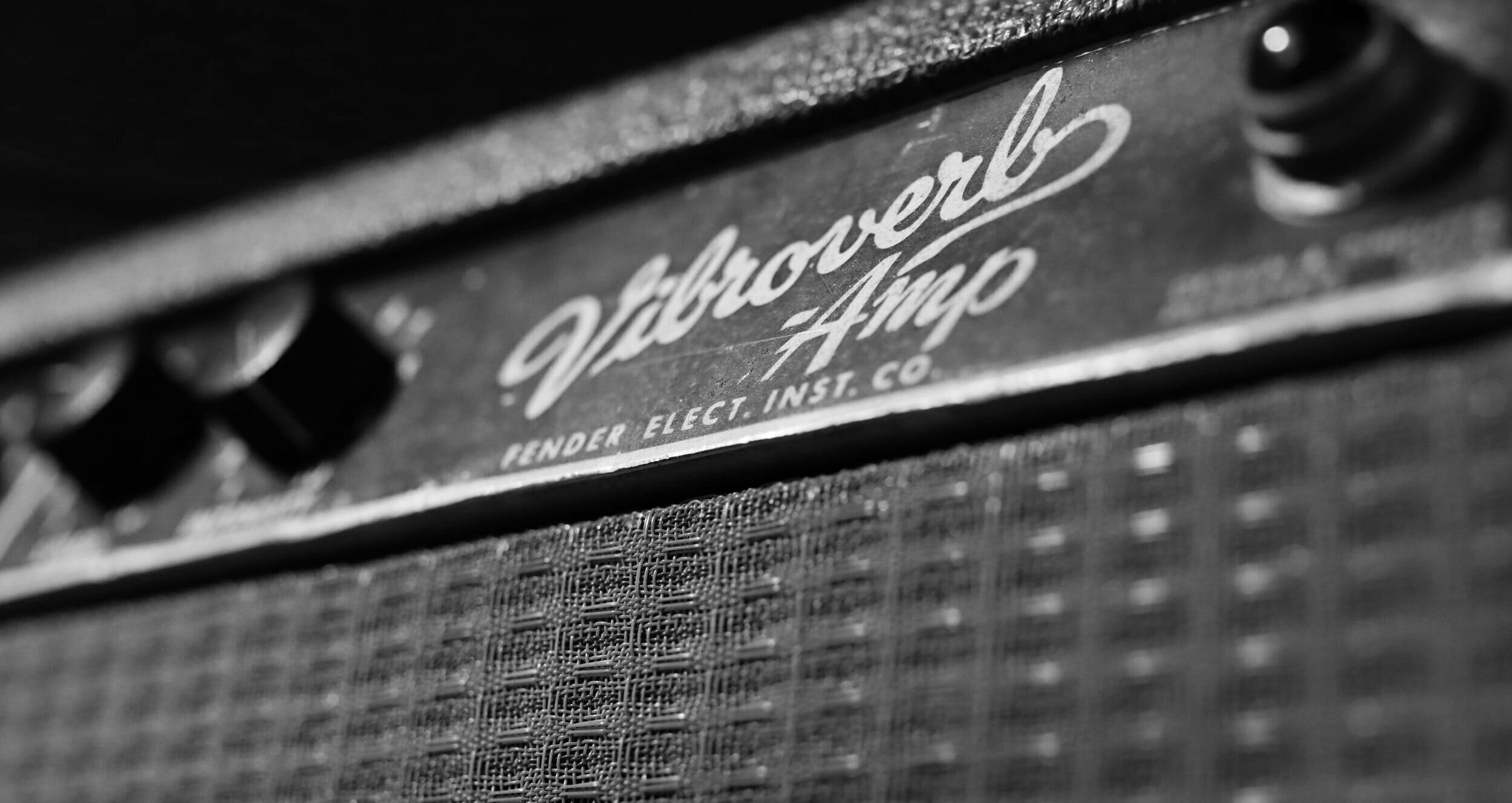RECORDING ELECTRIC GUITARS
There are a few different ways to go about recording electric guitars. Let’s take a look…
D.I.
Let’s start with the simplest method first. D.I. stands for direct injection and means that the guitar is plugged directly into the recording system without going to an amplifier first. As an electric guitar has has a high-impedance output it is not possible to plug it directly into your audio interface. The guitar should first be plugged into a D.I. box, which converts the signal to the appropriate level and impedance for a mic preamp. Some preamps (such as the API 3124) have a D.I. input built in.
Recording with this method can be a good way to go if you are looking for a very clean sound without any amp hiss or hum. You could also use an amp simulator plugin with the D.I. sound to recreate the sound of a specific amp that you don’t have access to. It is also possible to simultaneously record a D.I. signal and the output of an amp as a backup if the amp sound turns out to be inappropriate for the production. You could then use the D.I. signal and ‘re-amp’ it; that is send it back out of the DAW through a re-amp box to an amplifier, capturing the sound of the amp with a microphone.
MICROPHONE AND AMP
Exactly as it sounds, this means placing a microphone of some sort to capture the sound from a guitar amp. This means that you should place a strong emphasis on getting the sound right at the amp first. Spend some time in the room with the amp, using the tone controls to find your tone. Try to angle the amp up towards you as you listen as this will give you a better idea of the sound that the mic will capture.
MICROPHONE CHOICE
The choice of microphone and it’s placement will have an effect on the sound captured. Some popular mics used in the recording of electric guitars are the Shure SM57, the Royer 121 and the AKG C414. At Everland Studios, I’ve also gotten some great sounds with a Beyerdynamic M69. The advantage of the SM57 of course, is that it is extremely cheap and widely available.
Typically dynamic mics (such as the 57) will have a more midrange-focused sound. Ribbon mics (such as the Royer) are typically darker with less top end. Condensers (like the C414) will capture a brighter sound with more top end. If you have the option to experiment, try a few mics to see which sound suits your song best.
POSITIONING THE MIC
As mentioned, where you place the mic relative to the amp will have a huge impact on the sound you capture. A good place to start is with the mic a couple of centimetres from the grille of the amp pointing directly at the centre of the speaker cone. From there, you can experiment with moving the mic out from the centre towards the edge of the speaker cone. This will result in a darker sound with less high end. Move the mic a little at a time as a small movement will result in a big change in sound. Angling the microphone relative to the speaker cone will also change the sound by reducing the transients.
Experiment also with moving the mic away from the amp. This will introduce more room ambience into the sound. Be careful though - if you’re recording in an untreated room this ambience may be undesirable and it could be better to keep the mic close to the speaker.
DUAL MICING
If you have the luxury of being able to dedicate two mics to a single amp, you can combine two different sounds to achieve your ideal tone. Often this will be a combination of a dynamic and a condenser. Both mics can be placed at the same distance or one can be placed further away. When doing the latter, be careful of phase issues between the two microphones. Phasing can cause certain frequencies to cancel each other out or become more pronounced. This can be used to your advantage but it is a case of experimenting with moving one of the mics until you hear a combination that works.
Once you have both mics in position, their outputs can be summed together and recorded to a single channel or you could record each to a separate channel. The advantage of summing is that it cuts down decision making when it comes to mix time. The advantage of two channels is that you have more flexibility to alter the sound in the mix.
AMPLIFIER CHOICE (LESS IS MORE)
It might be that on stage, when it comes to amps, that bigger is better. A hundred watts and a 4 x 12” cab right? This usually isn’t the case when it comes to recording, though. Often times, a smaller amp will produce a sound that appears bigger once recorded. This is because, even at lower volumes, the amp is working at it’s full capacity, thereby sounding like it’s cranked to 11.
RECORDING GUITARS AT EVERLAND
We specialise in guitar-based music at Everland. If you’re in Sydney and looking for recording studio services, please feel free to get in contact with Everland Studios. We’ll be happy to have a chat about your project and give you a competitive quote.

